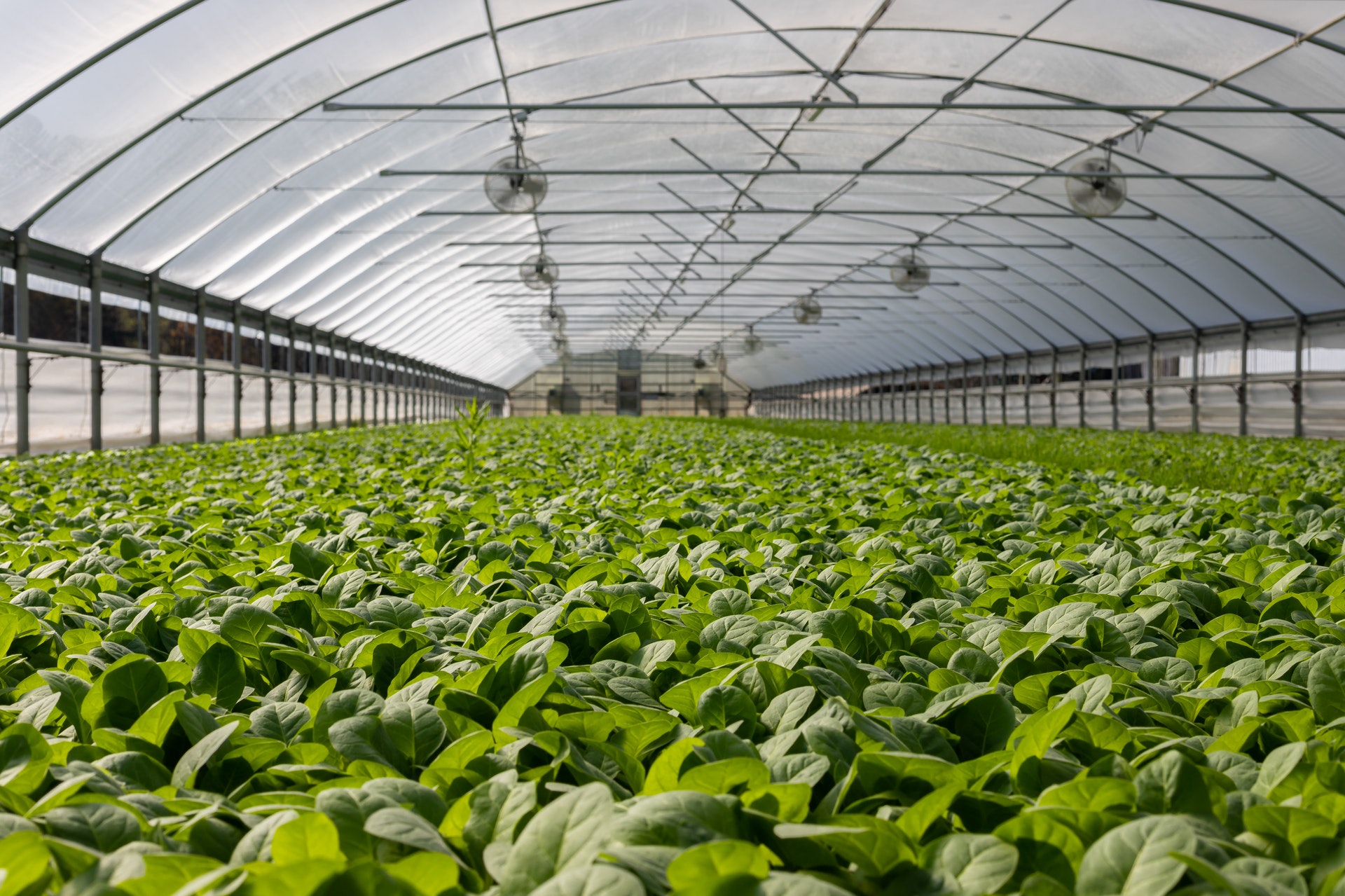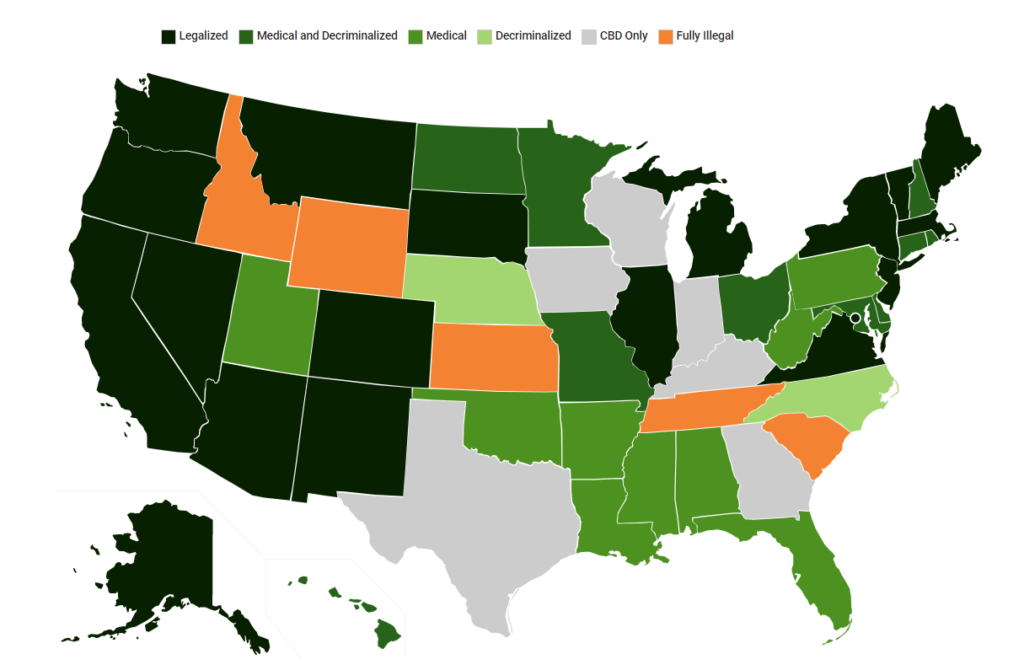
Cannabis is a continuously evolving industry. With different states having different levels of legalization, many entering the market find they are constantly facing new hurdles. It’s important to be aware of the current state of the industry as it changes.
The current state of the cannabis industry is one of constant motion and regulatory turbulence. As of now (September 2021), the cannabis industry is truly soaring to new heights. However, we are still dealing with the challenges caused by the difference between regulatory laws on the state and federal level.
Federal Regulation
To start, The Cannabis Administration & Opportunity Act was introduced to the Senate on July 14th by Charles Schumer (D-New York) as the lead sponsor. This is a major step toward federal legalization and ending the war on drugs that has criminalized so many unworthy parties. However, the act lacks awareness of its social, financial and long term effects it could have. One major cause and effect comes via the federal excise tax of 25% on top of state taxes. This addition to the bottom-line cost to the consumer could lead to a huge migration back to black and grey markets, as many businesses and customers simply can’t afford to pay the high tax rate. On the other hand, the social equity incentives and record expungement of cannabis-related arrests are a comforting part of the bill. However, the bill still proves to be vague enough to give many worry going forward.
FDA Involvement
The FDA continues to lack the discipline, integrity, and bandwidth to be able to regulate the CBD market. In August, the FDA rejected applications from Charlotte’s Web and Irwin Naturals to regulate CBD as a dietary supplement. This concerning outcome illustrates the FDA’s continued inability to define and regulate CBD and hemp-derived products. Consequently, this is leading to a boom in other untested and potentially dangerous synthetic products. If you haven’t heard about the recent Delta-8 boom, then you need to Google it.
Delta-8 is a synthetically derived cannabinoid that can be produced from the hemp plant. This makes it technically legal as it is derived from hemp and has a Delta-9 or THC content of less than 0.3%. Which is within the legal limit according to the 2018 Farm Bill. Delta-8 isn’t the only synthetically derived cannabinoid we are seeing either. Many different derivatives are popping up such as THC-O, HHC, D-10, etc. While the innovation and chemistry is incredibly impressive, the lack of regulatory oversight and ease of acquiring some of these cannabinoids is proving to sound alarm bells in many states.
Delta-8-THC
“Currently, Delta-8 is banned or sales restricted in Alaska, Arizona, Arkansas, Colorado, Connecticut, Delaware, Kentucky, Idaho, Iowa, Michigan, Mississippi, Montana, New York, North Dakota, Rhode Island, Utah, Vermont, and Washington.” As of August 12 2021. Still with the current changing status of legalization many states are on the way to either medical or recreational legalization of cannabis. The cannabis industry is proving to still have a huge market potential for success.
“Eighteen states, two territories, and the District of Columbia have legalized small amounts of cannabis (marijuana) for adult recreational use.” As of July 6th 2021.

The expected value of the cannabis industry is coming in around $43 billion by 2025. “By 2025, 42% of total annual U.S. cannabis demand is projected to be met by legal purchases in regulated marketplaces, up from 24% in 2020, fueled by both a continued rise in legal market spending as well as the conversion of existing illicit market consumer spending to legal regulated sources.” The potential of this industry whether through selling end products to consumers or an ancillary company has amazing possibilities. There still proves to be significant room for support from the legal side of the industry. Getting into this industry now will warrant the possibility of immense success in the years to come.
Works Cited
Cannabis in the U.S. Mid-Year Market Update. (n.d.). Retrieved from https://newfrontierdata.com/product/cannabis-in-the-us-2021-mid-year-market-update/
Cannabis Industry Statistics for 2021. (n.d.). Retrieved from https://flowhub.com/cannabis-industry-statistics
Data, N. F. (n.d.). 2021 Cannabis Regulatory Landscape: Emerging Trends in North America and Europe. Retrieved from https://info.newfrontierdata.com/2021-cannabis-regulatory-landscape
Dorbian, I. (2021, June 21). Legal Cannabis Market Projected To Rack Up $43 Billion By 2025. Retrieved from https://www.forbes.com/sites/irisdorbian/2021/06/18/legal-cannabis-market-projected-to-rack-up-43-billion-by-2025-says-new-study/?sh=5d726dcf36b4
Dunn, B. (2021, August 12). Updated: Delta-8 legality map. Retrieved from https://mogreenway.com/2021/07/14/delta-8-legality-map/
Frontier Data, N. (n.d.). Up in Smoke? Analysis of the Cannabis Administration & Opportunity Act. Retrieved from https://info.newfrontierdata.com/up-in-smoke-analysis-of-the-cannabis-administration-opportunity-act
Hartman, M. (2021, July 6). Retrieved from https://www.ncsl.org/research/civil-and-criminal-justice/marijuana-overview.aspx
Map of Marijuana Legality by State. (2021, July 27). Retrieved from https://disa.com/map-of-marijuana-legality-by-state
Sabaghi, D. (2021, August 24). FDA Rejects Full-Spectrum CBD As A Dietary Supplement. Retrieved from https://www.forbes.com/sites/dariosabaghi/2021/08/24/fda-objects-full-spectrum-cbd-as-a-dietary-supplement/?sh=406dd8da73fb
U.S. Senate’s Cannabis Administration and Opportunity Act Clarifies How Federal Government May Regulate Marijuana, but Leaves Unanswered Questions. (2021, July 20). Retrieved from https://www.natlawreview.com/article/us-senate-s-cannabis-administration-and-opportunity-act-clarifies-how-federal

Teagan is the Marketing & Communications Manager for 710Spirits® and Rocky Mountain Reagents. While continually learning about the cannabis industry and all the possibilities it has to offer she creates content for The Canna Consortium both for blog posts and social media. Make sure to check out @thecannaconsortium2.0 for all industry updates and news.
